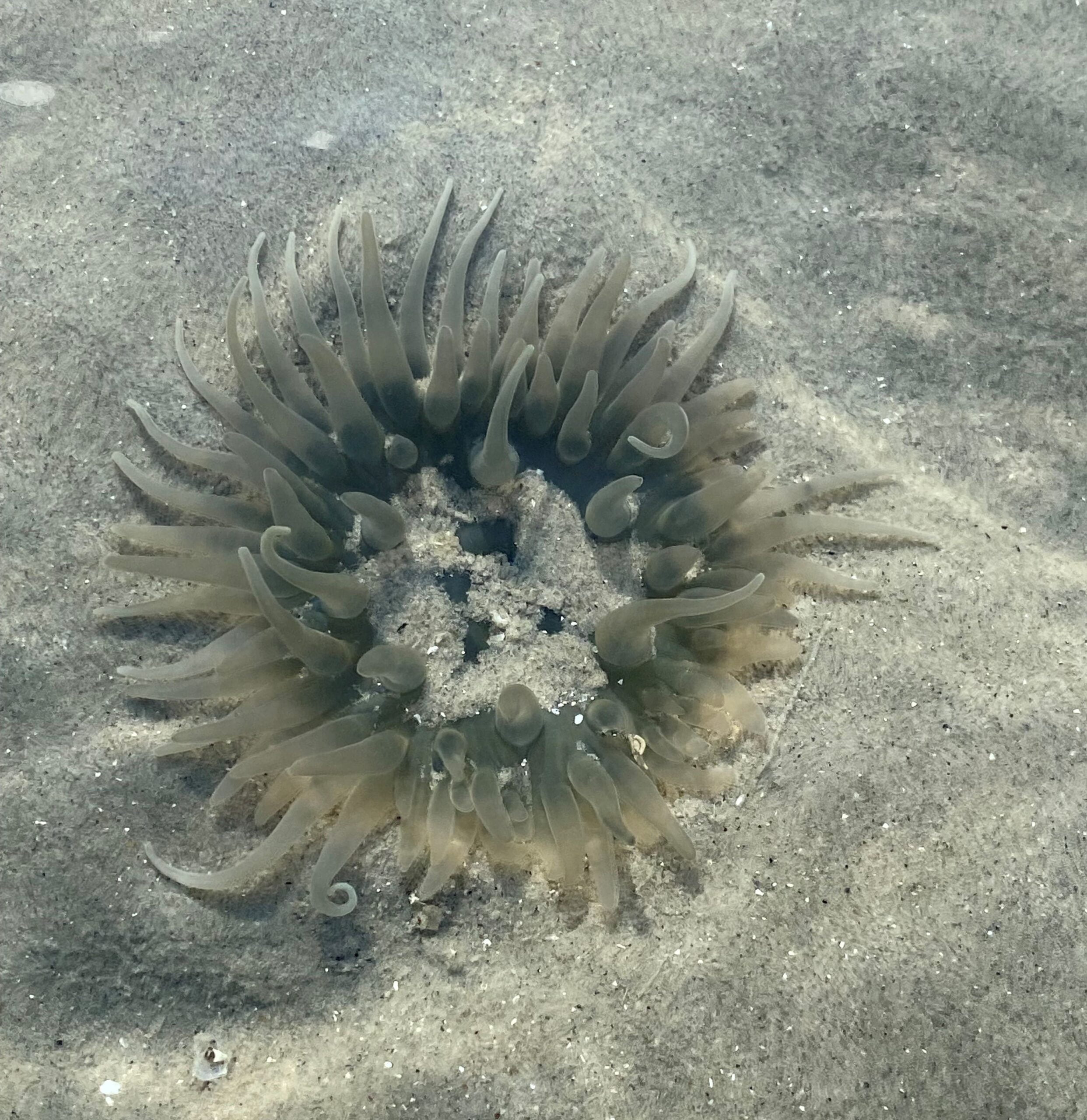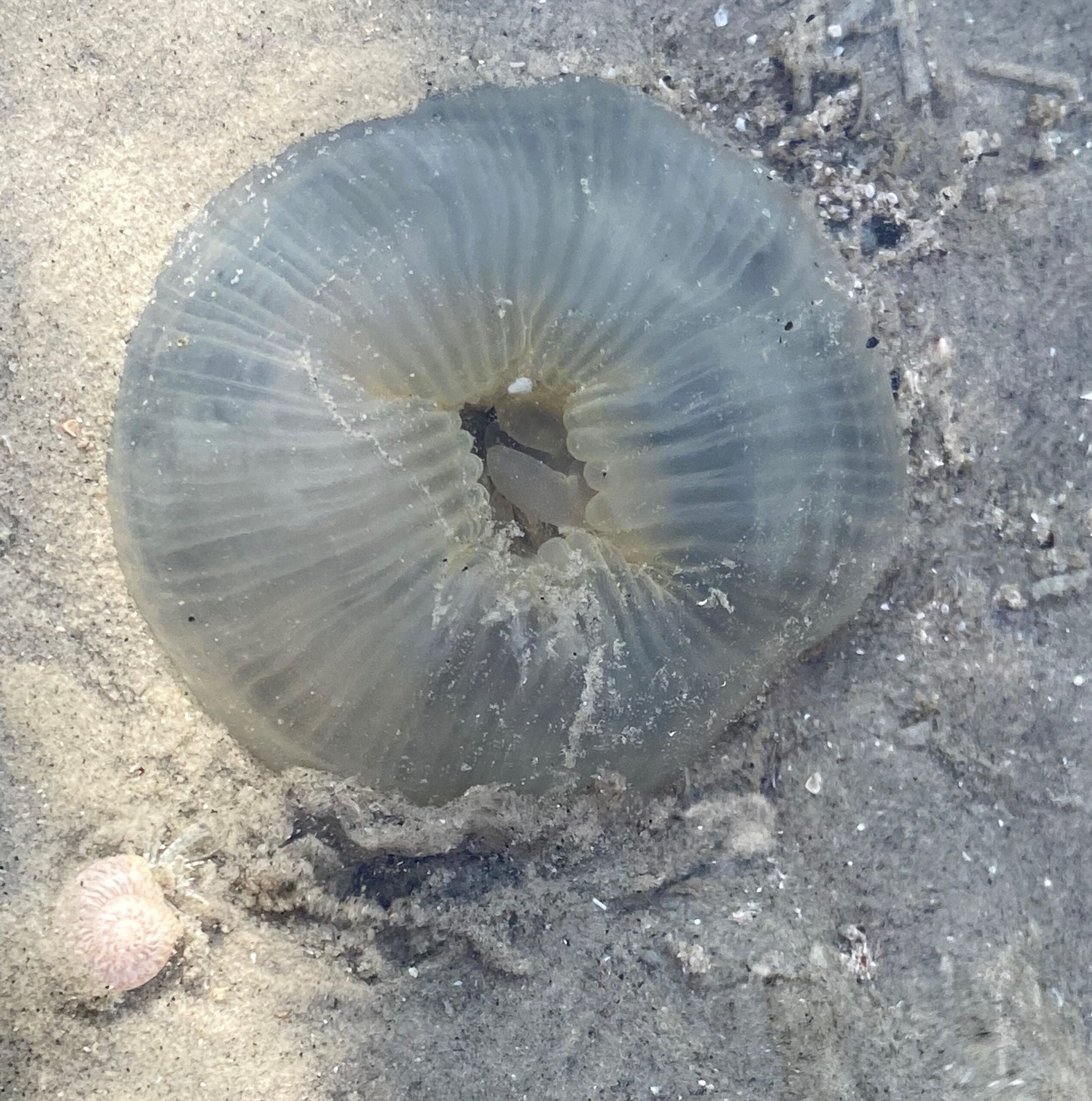
Pearly Sea Anemone
Scientific Name: Paracondylactis sinensis
This anemone is about 10 cm in diameter with its tentacles expanded. Its body column is normally buried deep in the sand. During low tides or when threatened, the tentacles can be completely retracted inside the body cavity and it turns into a ball to protect itself from dehydration and predators.
Sea anemones are classified in the phylum Cnidaria. Just like jellyfish and corals, anemone tentacles have specialised stinging cells called nematocysts used for capturing prey and defending themselves against predators. Once a prey is immobilized, the tentacles are folded inwards to bring the prey to the mouth. Waste and undigested matter are excreted Spiky Sea Pen Scientifi c Name: Pteroeides sp. Spiky sea pen belongs to Phylum Cnidaria, class Anthozoa, which includes corals and sea anemones. Each spiky sea pen is a colony of polyps. The lower part of a spiky sea pen is a rigid, erect stalk usually anchored in sand; the upper half is a feather-like structure covered with many flower-like polyps, each with 8 tentacles that can capture tiny food particles in the water. through the mouth as well.
Many anemones, like corals, are inhabited by symbiotic algae. These symbiotic algae can perform photosynthesis and provide sea anemones with organic nutrients.


